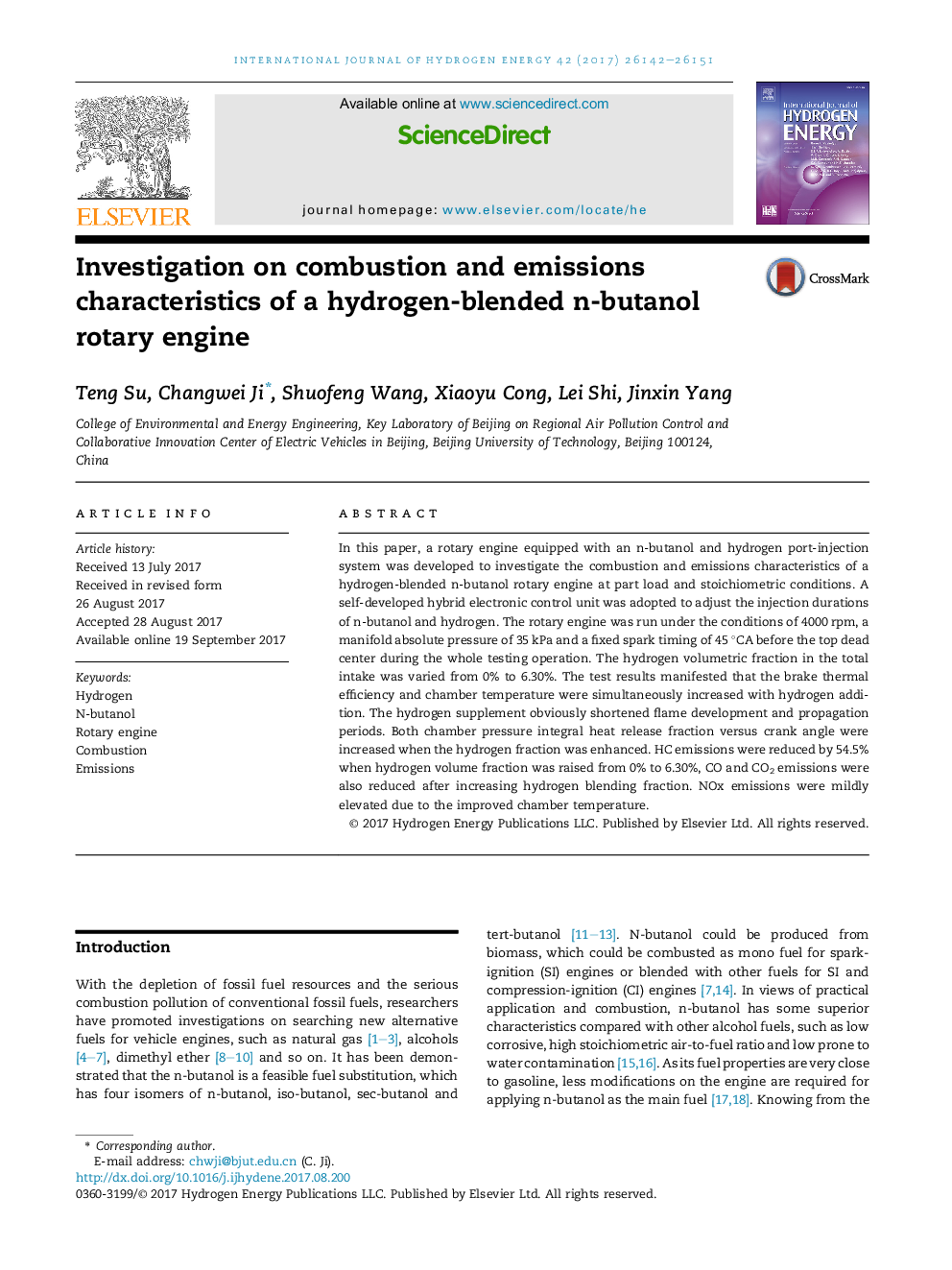| Article ID | Journal | Published Year | Pages | File Type |
|---|---|---|---|---|
| 5145176 | International Journal of Hydrogen Energy | 2017 | 10 Pages |
Abstract
In this paper, a rotary engine equipped with an n-butanol and hydrogen port-injection system was developed to investigate the combustion and emissions characteristics of a hydrogen-blended n-butanol rotary engine at part load and stoichiometric conditions. A self-developed hybrid electronic control unit was adopted to adjust the injection durations of n-butanol and hydrogen. The rotary engine was run under the conditions of 4000 rpm, a manifold absolute pressure of 35 kPa and a fixed spark timing of 45 °CA before the top dead center during the whole testing operation. The hydrogen volumetric fraction in the total intake was varied from 0% to 6.30%. The test results manifested that the brake thermal efficiency and chamber temperature were simultaneously increased with hydrogen addition. The hydrogen supplement obviously shortened flame development and propagation periods. Both chamber pressure integral heat release fraction versus crank angle were increased when the hydrogen fraction was enhanced. HC emissions were reduced by 54.5% when hydrogen volume fraction was raised from 0% to 6.30%, CO and CO2 emissions were also reduced after increasing hydrogen blending fraction. NOx emissions were mildly elevated due to the improved chamber temperature.
Related Topics
Physical Sciences and Engineering
Chemistry
Electrochemistry
Authors
Teng Su, Changwei Ji, Shuofeng Wang, Xiaoyu Cong, Lei Shi, Jinxin Yang,
